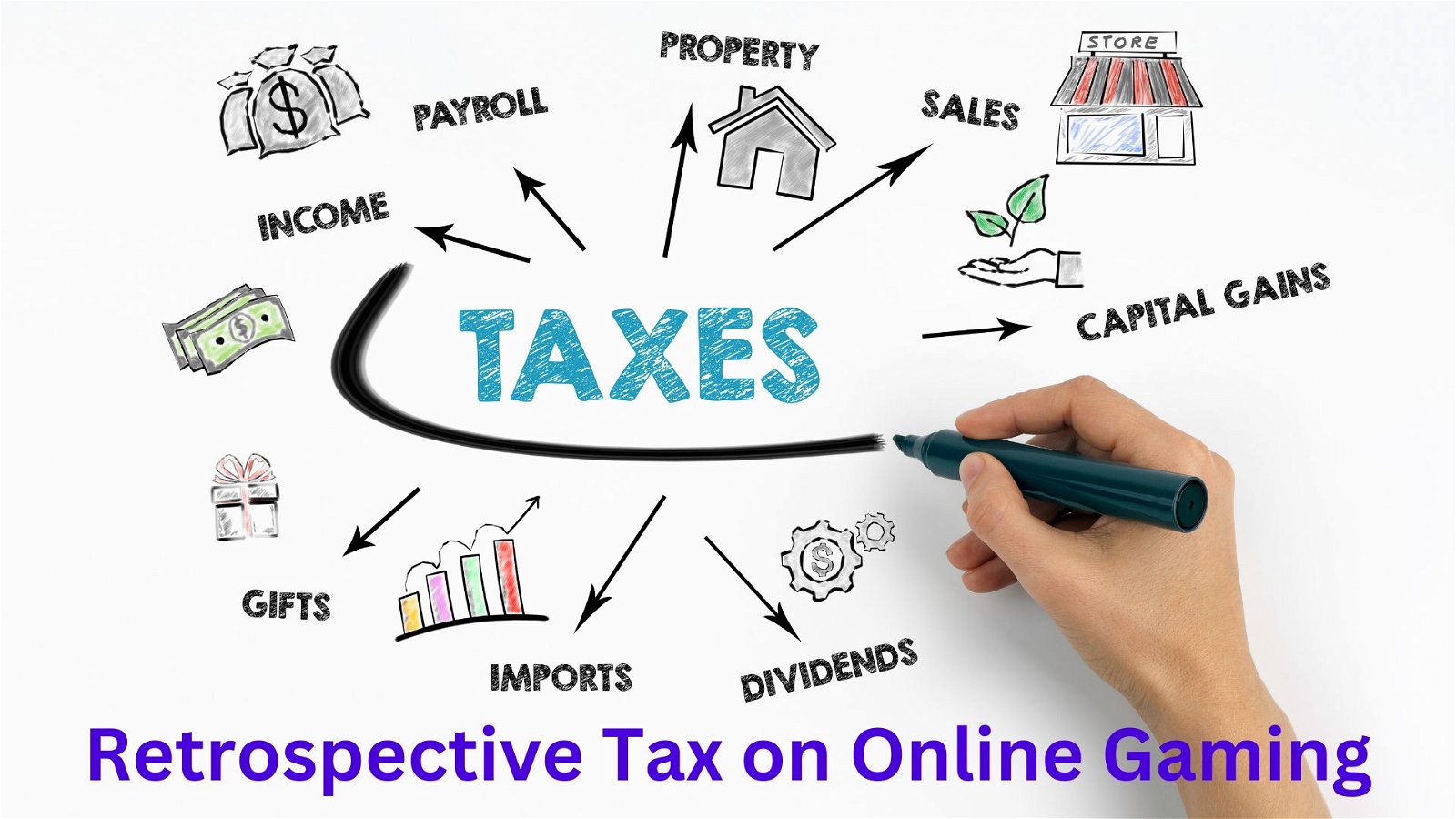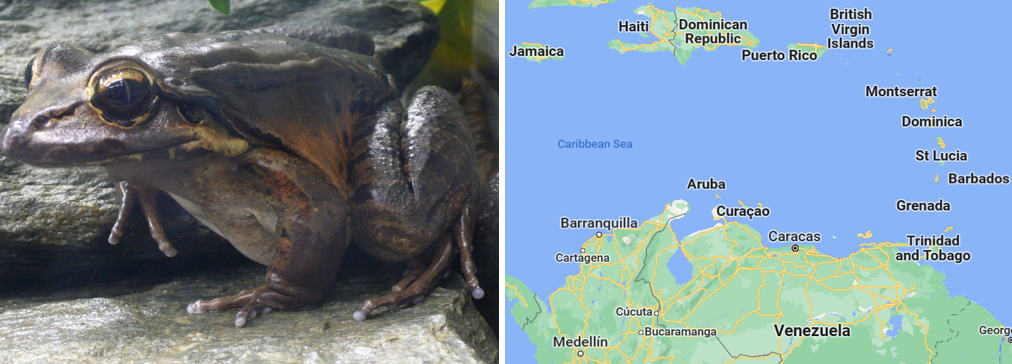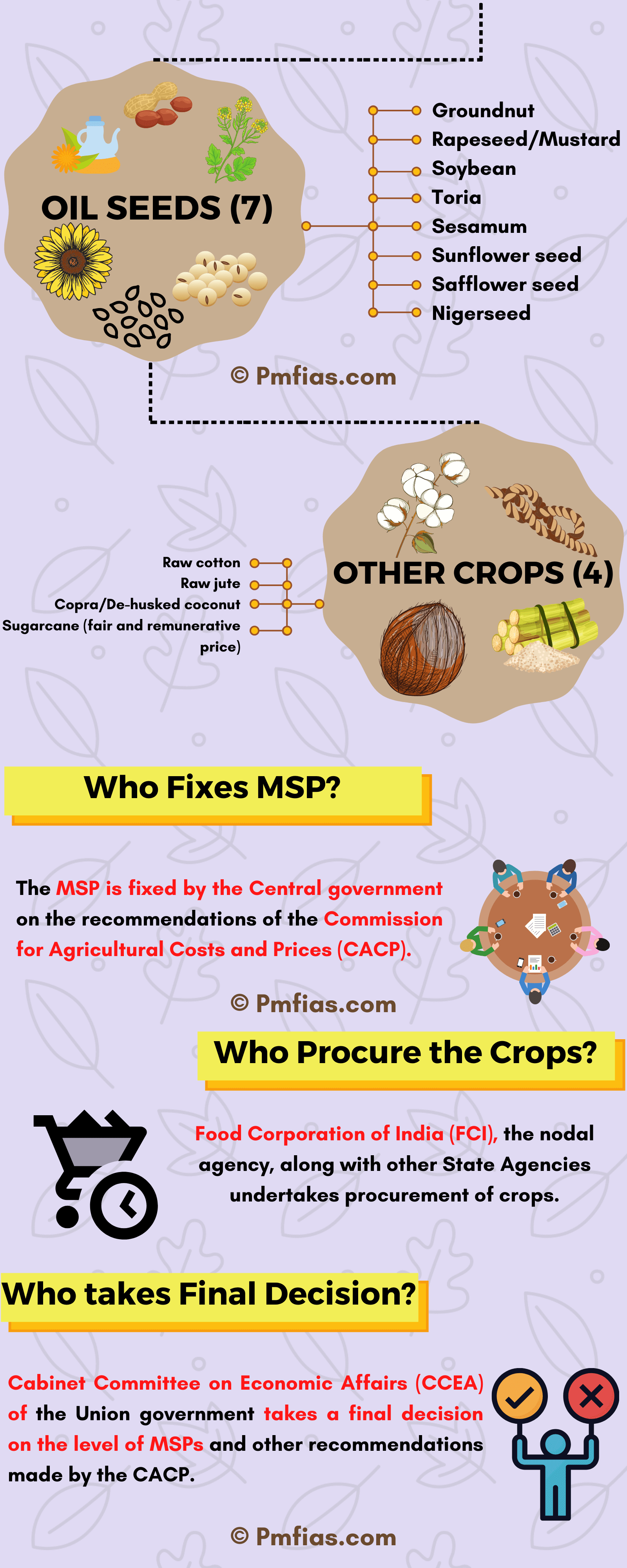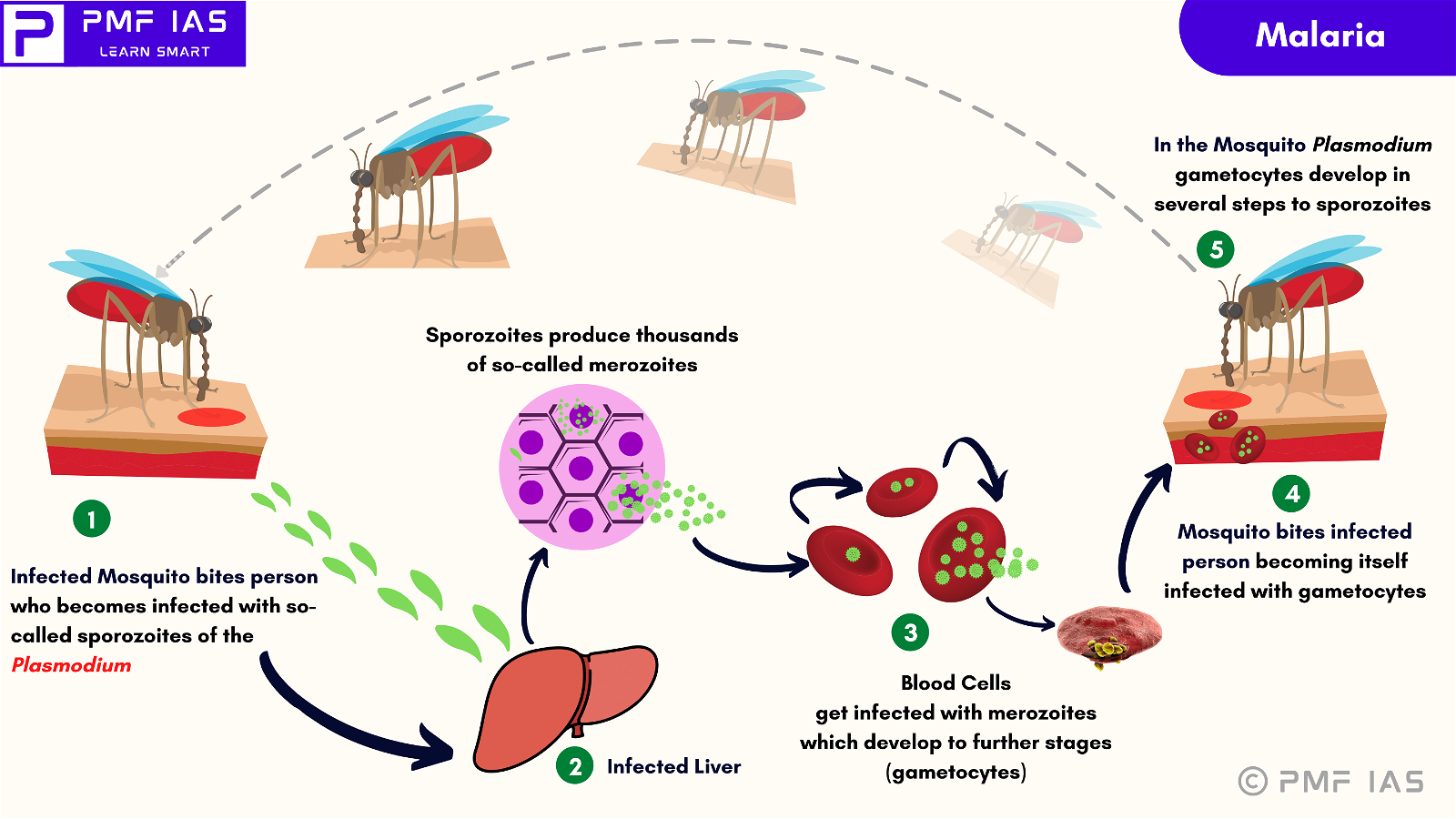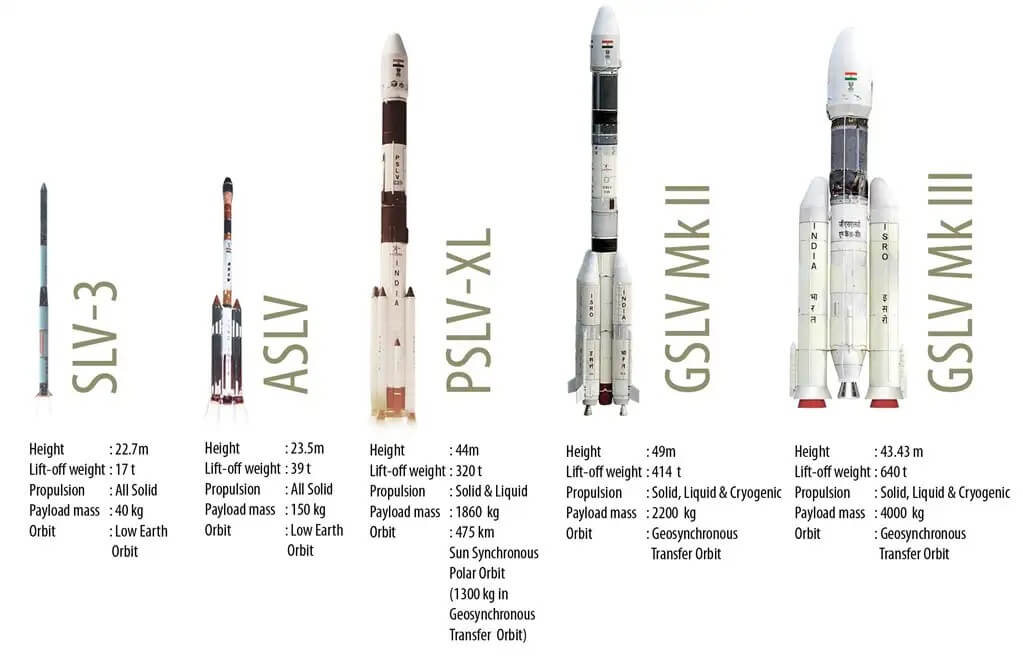
Current Affairs August 15-16, 2023: Quit India Movement, NEET, Katchatheevu Island, OIC, One District One Product, Cauvery River Water Dispute, National Multidimensional Poverty Index, Farmers Distress Index, Tampara Lake, Murmansk and Odesa Ports
Subscribers of "Current Affairs" course can Download Daily Current Affairs in PDF/DOC
Subscribe to Never Miss an Important Update! Assured Discounts on New Products!
Must Join PMF IAS Telegram Channel & PMF IAS History Telegram Channel
{GS1 – MIH – Freedom Struggle – 2023/08/16} Quit India Movement
Context (IE): President Murmu pays tribute to women freedom fighters Matangini Hazra and Kanaklata Barua. Both were martyrs of the Quit India Movement (1942).
Matangini Hazra
- Matangini Hazra was a widow from the Medinipur district of West Bengal.
- At age 61, she was arrested for participating in the Civil Disobedience Movement (1930) and the Salt March led by Gandhi.
- She became an active member of the Indian National Congress.
- During the Quit India Movement, while leading a procession to take over the Tamluk police station from British authorities, she was shot dead at the age of 73.

Kanaklata Barua
- Kanaklata Barua from Assam was one of the youngest martyrs of the Quit India Movement.
- She led the Mrityu Bahini, a procession of freedom fighters, to unfurl the Tricolour at Gohpur police station during the Quit India Movement.
- Kanaklata, who was only 17 years of age then, was shot dead by police.

Quit India Movement
- Mahatma Gandhi launched the Quit India Movement on 8th August 1942, calling an end to British rule at the All-India Congress Committee Session in Mumbai.
- During his speech, Gandhiji called “Do or Die” at the Gowalia Tank Maidan (now known as August Kranti Maidan).
- Aruna Asaf Ali (the ‘Grand Old Lady’ of the Independence Movement) hoisted the Indian flag at the Gowalia Tank Maidan in Mumbai during the Quit India Movement.
- Yusuf Meherally (a socialist and trade unionist) coined the slogan ‘Quit India’. He also served as Mayor of Mumbai.
Demands of the Quit India Movement
- To end the British rule in India with immediate effect.
- To form a provisional government after the withdrawal of the Britishers.
Causes of the Quit India Movement
- Failure of the Cripps Mission was the immediate cause for the Quit India movement.
- The British involved India in World War II without prior consultation, which the INC did not support.
- The shortage of essential commodities during World War II further fuelled anti-British sentiments.
Cripps Mission
Reasons for Failure of Cripps Mission
INC Rejected the Proposals Because
Muslim League Rejected the Proposals Because
|
Phases of the Quit India Movement
| Phase | Description |
| First Phase | It is marked by urban revolt, strikes, boycotts, picketing, and demonstrations throughout the country. Gandhiji was imprisoned at Aga Khan Palace in Pune. |
| Second Phase | The focus shifted to the countryside, which witnessed major peasant rebellions.
It was marked by destroying railway tracks and stations, telegraph wires and poles, attacks on government buildings, etc. |
| Third Phase | It witnessed the formation of national governments or parallel governments in isolated pockets (Ballia, Tamluk, Satara, etc.) |
Successes of the Quit India Movement
- Rise of Future Leaders: Ram Manohar Lohia, J.P. Narayan, Aruna Asaf Ali, Biju Patnaik, Sucheta Kriplani, etc., emerged as prominent leaders.
- Women Participation: The movement saw the active participation of women.
- Rise of Nationalism: It instilled a greater sense of unity and brotherhood among the Indian people. Students dropped out of institutions. People gave up their jobs collectively for their country.
- Changed Britishers Outlook: Though the movement was suppressed in 1944, Britishers came to the critical realisation that India was ungovernable in the long run due to the cost of World War II. This changed the nature of Britain’s political negotiations.
Reasons Why the Quit India Movement Failed
- Brutal Repression: The British violently suppressed the movement, and many people were shot and injured.
- Lack of Support: Muslim League, the Communist Party of India, and the Hindu Mahasabha did not support the movement. The Indian bureaucracy also did not support the movement. Even many Congress members like C Rajagopalachari did not favour Gandhi’s idea.
{GS2 – Education – Issues – 2023/08/16} TN CM Wants Education Back in State List
- Context (TH): The Tamil Nadu CM called for transferring education back to the State List of the Seventh Schedule of the Constitution.
- The CM’s remarks came in the aftermath of the TN Governor declining to provide his assent to the TN State government’s bill seeking exemption from the NEET.
National Eligibility and Entrance Test (NEET)
- It is an all-India entrance test for admission to undergraduate medical courses.
- NEET has been conducted since 2013.
Issues
- Some States are opposing the NEET on the following grounds:
- NEET fosters inequity and benefits affluent candidates who can afford expensive coaching.
- The centralised admission test causes a monetary burden and inconvenience for students.
- The national level tests favour students from the Central Board of Secondary Education (CBSE) (Close to 59% of the shortlisted students in IIT JEE were from the CBSE Board alone).
- It undermines the autonomy of the States on education matters.
Education in India
- The IC, in its original enactment, defined education as a State subject.
- The 42nd Constitutional Amendment Act of 1976 moved education to the concurrent list.
- The 86th Constitution Amendment Act inserted Article 21A in the IC, making education a Fundamental Right for Children aged 6 to 14 years.
- Right to Education (RTE) Act, 2009, provides free and compulsory education to all children aged 6 to 14 years.
Education as a concurrent subject
- It allows for flexibility and coordination between the central and state governments.
- It enables the central government to set specific national-level educational standards and policies while permitting states to address local needs and issues in education.
Seventh Schedule of the IC
42nd Constitutional Amendment Act of 1976
|
{GS2 – IR – India-Sri Lanka – 2023/08/16} Katchatheevu Island

- Context (IE): Prime Minister Narendra Modi, in his speech in the Parliament during the No Confidence debate, mentioned the Katchatheevu island.
History of the Island and How it Became an Issue for Indo-Sri Lankan Relations

- Katchatheevu is an uninhabited speck between India and Sri Lanka in the Palk Strait.
- It is of relatively new geological origin, being the product of a 14th-century volcanic eruption.
- It lies northeast of Rameswaram, about 33 km from the Indian coast.
- Only structure on the island is an early 20th-century Catholic shrine, St Anthony’s church. Devotees from both India and Sri Lanka make the pilgrimage there.
- Katchatheevu is not suited for permanent settlement as there is no source of drinking water.
National Emergency in India 1975
Exclusive Economic Zones (EEZs)
Sri Lankan Civil War
|
What is Tamil Nadu’s Position on Katchatheevu?
- Katchatheevu was given away to Sri Lanka in 1974 without consulting Tamil Nadu state assembly.
- There were protests against PM Indira Gandhi’s move, citing two reasons:
- The historical control of the Ramnad Zamindari over the island.
- Traditional fishing rights of Indian Tamil fishermen.
- In 1991, in the aftermath of India’s disastrous intervention in the Sri Lankan Civil War, the Tamil Nadu Assembly sought retrieval of Katchatheevu.
- In 2008, then AIADMK supremo, the late J Jayalalitha, filed a petition in court saying Katchatheevu could not be ceded to another country without a constitutional amendment.
- However, GoI’s position has largely remained unchanged. It argued that since the island had always been under dispute, “no territory belonging to India was ceded nor sovereignty relinquished.”
How Indian Territory of India can be Ceded? (GS 1, Polity)
Berubari Union Case (1960)
|
{GS2 – IR – Regional Groupings – 2023/08/15} Organisation of Islamic Cooperation
- Context (TH): OIC suspended the status of Sweden’s special envoy. It accused Sweden of enabling “the repeated abuse of the sanctity of the Holy Quran and Islamic symbols.”
- Organisation of Islamic Cooperation (OIC) is a coalition of 57 Muslim countries established in 1969.


- It is the second largest international organisation after United Nations.
- It endeavours to safeguard and protect the interests of the Muslim world in the spirit of promoting international peace and harmony among various people.
India and OIC
- Initially, India was invited, but later the Pakistan government lobbied to dis-invite India.
- In 2018, Bangladesh proposed to OIC to give Observer status to India, as India has 10% of the world’s Muslim population.
- In 2019, UAE called India a guest of honour at the OIC meeting. The then Foreign Minister Sushma Swaraj participated in that event.
- At present, India is neither a member nor an observer of the OIC.
OIC’s stand on Kashmir
- OIC stands with Pakistan on Kashmir. Every summit includes the Kashmir issue and criticises alleged Indian atrocities in J&K.
- But only a handful of countries, such as Turkey and Malaysia, have come with public condemnation against India.
{GS2 – MoCI – Schemes – 2023/08/16} One District One Product (ODOP) Wall
- Context (PIB): The ODOP initiative and DAY-NRLM collaborated to launch the ODOP Wall, a visually appealing display of India’s diverse and unique handicrafts.
- The ODOP Program is a project operating under the Department for Promotion of Industry and Internal Trade (DPIIT), which falls under the Ministry of Commerce and Industry.
- The program identifies distinctive and culturally significant products from each district, encompassing handicrafts, handloom, and agricultural goods.
- The idea is to select, brand, and promote One Product from each District of the country.
- It is a CSS shared by the central government and states in 60:40 contributions.
- It is operationally merged with the ‘Districts as Export Hub’ initiative.
- States will identify the ODOP food product for a district.
Goals of The ODOP Initiative
- Unlocking districts’ full potential, fostering economic and socio-cultural development.
- Generating job opportunities, particularly in rural regions.
- Transform every district into an export centre.
- To facilitate the growth of manufacturing.
- Provide support to local businesses.
- Identify potential international markets.

{GS2 – MoRD – Schemes – 2023/08/16} DAY-NRLM
- Context (PIB): The ODOP initiative and DAY-NRLM collaborated to launch the ODOP Wall, a visually appealing display of India’s diverse and unique handicrafts.
- Deendayal Antyodaya Yojana-National Rural Livelihood Mission (DAY-NRLM) was launched by the Ministry of Rural Development (MoRD) in 2011.
- In 1999, after restructuring Integrated Rural Development Programme (IRDP), the MoRD launched Swarnajayanti Grameen Swarojgar Yojana (SGSY) to promote self-employment.
- SGSY is remodelled to form NRLM, thereby plugging the shortfalls of the SGSY programme.
- DAY-NRLM is implemented through a network of SHGs & Community-Based Organizations (CBOs).
- In 2021, the program had over 100 million members and had disbursed over ₹1 trillion in loans.
|
Key features of DAY-NRLM
- It provides financial services to SHGs and CBOs, such as loans, savings, and insurance.
- It gives skill training to SHG members in entrepreneurship, business management, life skills, etc.
- It helps SHG members to access markets for their products.
Sub-schemes under NRLM


Aajeevika Grameen Express Yojana (AGEY)
- Launched in FY 2017-18, the scheme aims to provide safe and affordable public transport services to rural communities.
- It engages CBOs or SHGs in managing and operating public transport services, thereby creating livelihood opportunities for rural youth and women.
Aajeevika Skills
- The scheme provides skill development training to rural youth and women.
- The training covers various sectors, such as agriculture, handicrafts, tourism, construction, etc.
Start-up Village Entrepreneurship Program (SVEP)
- SVEP aims to promote entrepreneurship in rural areas by facilitating the establishment and growth of micro-enterprises.
- It supports rural entrepreneurs, especially those from marginalised communities.
Mahila Kisan Sashaktikaran Pariyojana (MKSP)
- It empowers women farmers by enhancing their participation in agriculture and related activities.
- MKSP supports capacity building, training, and access to resources, technologies, and markets to improve women’s agricultural productivity and income.
Deen Dayal Upadhyaya Grameen Kaushalya Yojana (DDU-GKY)
- While not directly under NRLM, DDU-GKY complements its efforts by providing skill training and employment opportunities to rural youth from poor families.
- It aims to ensure inclusive growth by focusing on skill development and self-employment.
Interest Subvention Scheme (ISS)
- The ISS aims to provide interest rate subsidies to the Self Help Groups (SHGs) on their bank loans, making credit more affordable and accessible for rural women.
- This helps in promoting economic activities and entrepreneurship at the grassroots level.
{GS2 – Polity – Inter-State Disputes – 2023/08/16} Cauvery River Water Dispute
- Context (TH): TN has requested SC to direct Karnataka to release the full 36.76 TMC of water that is due for September 2023, as per the Cauvery Water Disputes Tribunal’s (CWDT) final award of 2007, which was modified by the SC in 2018.
- CWMA had already ordered Karnataka to release 10,000 cusecs of water daily for the next 15 days, starting August 12.
- However, Karnataka has refused to abide by this decision, arguing that the lower rainfall in the Cauvery catchment area, including in Kerala, has led to the poor inflow to its own reservoirs.
Cauvery Water Disputes Tribunal (1990)
- Central Government, in 1990, in the exercise of the powers conferred by section 4 of the Inter-State River Water Disputes Act, 1956 had constituted the Cauvery Water Disputes Tribunal to resolve the water dispute among Karnataka, Kerala, Tamil Nadu, and Puducherry.
- The tribunal issued its final award in 2007, allocating 419 TMC to TN Tamil Nadu, 270 TMC to Karnataka, 30 TMC to Kerala and 7 TMC to Puducherry.
Supreme Court Intervention and the Final Verdict
- In 2018, SC delivered its final verdict, granting Karnataka an additional 14.75 TMC of river water.
- The final allocation for a total of 740 TMC is
- Karnataka: 284.75 (270 + 14.75) TMC
- Tamil Nadu: 404.25 (419 – 14.75) TMC
- 30 TMC to Kerala and
- 7 TMC to Puducherry
- The water allocation arrangement will stand unchanged for the next 15 years.
How is the water being shared?
- Cauvery River water is shared between Karnataka and T.N. according to a monthly schedule.
- In a Normal Water Year (June to May), Karnataka will release 177.25 TMC of water to TN.
- During the southwest monsoon season (June to September), a total of 213.14 TMC is to be released.
- The Monsoon (deficit) Season is when the Cauvery issue typically flares up.
{GS2 – Poverty – 2023/08/15} National Multidimensional Poverty Index (MPI)
- Context (TH | TH): 41.5 crore Indians came out of multidimensional poverty in 15 years, says UN.
- NITI Aayog index says 13.5 cr Indians lifted out of multidimensional poverty in the last five years.
Global Multidimensional Poverty Index (MPI)
- Global MPI is a measure of multidimensional poverty covering 107 developing countries.
- It was first developed in 2010 by Oxford Poverty and Human Development Initiative (OPHI) and United Nations Development Programme (UNDP) for UNDP’s Human Development Reports.
- Global MPI uses three dimensions and ten indicators.

- All indicators are equally weighted within each dimension.
- The MPI ranges from 0 to 1, and higher values imply higher poverty.
- Global MPI complements the international $2.15 a day poverty rate devised by World Bank.
|
Data used for Global MPI
- For India, GMPI uses the National Family Health Survey (NFHS) data.
- NFHS is conducted under the aegis of the Ministry of Health and Family Welfare (MoHFW) and the International Institute for Population Sciences (IIPS).
Nodal agency in India
- NITI Aayog is the nodal agency for monitoring the mechanism of the Global MPI in India.
- As the Nodal agency for the MPI, NITI Aayog has constituted a Multidimensional Poverty Index Coordination Committee (MPICC).
2023 Global Multidimensional Poverty Index (MPI)
- 1.1 billion out of 6.1 billion (~18%) live in acute multidimensional poverty across 110 countries.
- 25 countries, including India, successfully halved their global MPI values within 15 years.
Findings related to India
- Deprivation in all indicators declined in India.
- People who are multidimensionally poor and deprived under the nutrition indicator in India declined from 44.3% in 2005-06 to 11.8% in 2019-21.
- A total of 415 million people moved out of poverty in India within 15 years (2005-06 to 2019-21).
National Multidimensional Poverty Index (National MPI)
- It is published by NITI Aayog using the methodology in consonance with the global methodology.
- Like the global MPI, India’s national MPI has three equally weighted dimensions – Health, Education, and Standard of living – represented by twelve indicators.
- The national MPI model retains the ten indicators of the global MPI model.
- It also adds two indicators, viz., Maternal Health and Bank Accounts, in line with national priorities.
National MPI, 2023
- It is the second edition of the National MPI.
- It is prepared based on the latest National Family Heath Survey of 2019-21.
- It represents India’s progress in reducing multidimensional poverty between the two surveys, NFHS-4 (2015-16) and NFHS-5 (2019-21).
Highlights of the report
- Nearly 13.5 crore people came out of multidimensional poverty in five years.
- Uttar Pradesh registered the largest decline in the number of poor, with 3.43 crore people escaping multidimensional poverty.
- India registered a steep decline in the number of multidimensionally poor from 24.85% to 14.96% between 2015-16 and 2019-21.


- Between 2015-16 and 2019-21, the MPI value has nearly halved from 0.117 to 0.066 and the intensity of poverty has reduced from 47% to 44%.
- India is on the path of achieving the SDG Target 1.2 (of reducing multidimensional poverty by at least half) much ahead of the stipulated timeline of 2030.



Percentage of the total population who are multidimensionally poor





- The most rapid reduction in the proportion of multidimensionally poor individuals occurred in districts located within the states of Madhya Pradesh, Gujarat, Uttar Pradesh, and Rajasthan.


Issues with MPI
- There are several issues regarding measurability, aggregation across indicators, and of databases that provide the requisite information.
- Example: Child mortality is for population groups and not for households. Access to safe drinking water cannot be aggregated with indicators such as child mortality.
Poverty line estimation in India
- Poverty line is the amount of money needed for a person to meet his basic needs.
Consumption-Based Poverty Ratio
- It is an indicator of the percentage of people living below the poverty line based on their level of consumption expenditure.
- The National Sample Survey (NSS) periodically conducts large-scale surveys to collect data on various socio-economic aspects, including consumption patterns.
Importance
- Defining poverty in terms of income or consumption expenditure seems most appropriate, and this method is followed in most countries.
Pre-Independence Poverty Estimation
- Dadabhai Naoroji, in his book ‘Poverty and Un-British Rule in India,’ made the earliest estimate of the poverty line of ₹16 to ₹35 per capita per year at 1867-68 prices.
- The Bombay Plan (1944) suggested a poverty line of ₹75 per capita per year.
Post- Independence Poverty Estimation
|
Committees |
Poverty line |
|
|
Rural |
Urban |
|
| Lakdawala Committee (1993) (per capita per month) | Rs. 49.09 | Rs. 56.64 |
| Tendulkar Committee (2005) (per capita per day) | Rs. 26 | Rs. 32 |
| Rangarajan Committee (2012) (per capita per day) | Rs. 32 | Rs. 47 |
- Lakdawala Committee, Tendulkar Committee, and Rangarajan Committee have used the per capita consumption expenditureto estimate the poverty line.
MPI vs Poverty based on consumption expenditure
- The MPI includes the non-income dimensions of poverty.
- Some of these may not be tightly linked to the privately purchased consumption basket.
- Therefore, poverty based on consumption differs from deprivation based on education or health.
- MPI estimates can complement but not substitute for NSS’s consumption-based poverty ratios.
Lack of data
- We do not have official data on consumer expenditure after 2011-12.
- The survey data on consumption expenditures done in 2017-18 have not been released officially.
- In the absence of official data, it is difficult to compare with trends in the MPI.
{GS3 – Agri – Schemes – 2023/08/16} Farmers Distress Index
- Context (DTE): Central Research Institute for Dryland Agriculture (CRIDA), an institution under the ICAR, developed an early warning system called the ‘farmers distress index’.
- Aim: to minimise agrarian distress due to crop loss/failure and income shock.
- Farmers’ exposure to shocks has increased in recent years, with an increase in extreme climate events and market and price fluctuations, often driving them to death by suicides.
- The index will anticipate this distress and pre-warn different stakeholders (including central, state, local, and NGOs) so that they can take timely preventive measures.
- The index can sense imminent distress at least 3-4 months ahead of its actual occurrence.
Methodology Followed in Farmers Distress Index to Track Distress

Step After the Tracking Distress through the Index
- After the calculation of index values, different agencies can carry out interventions to prevent income shocks to farmers depending on the severity of distress.
- The current solutions that are being thought upon are:
- Direct money transfer
- Pradhan Mantri Fasal Bima Yojana (PMFBY) in case of crop failures
- Providing work under Mahatma Gandhi National Rural Employment Guarantee Act
- Enhanced rationing under Public Distribution System
Pradhan Mantri Fasal Bima Yojana (PMFBY)
Objectives of PMFBY
Crops Covered by PMFBY
Rate of Premium Paid by the Farmer to Insurance Company under PMFBY
Farmers Covered by PMFBY
Coverage of Risks and Exclusions under the PMFBY Scheme
|
Central Research Institute for Dryland Agriculture (CRIDA)
- CRIDA was established in 1985 as an institute under the Indian Council of Agricultural Research.
- It is headquartered in Hyderabad.
- Objective: To undertake agricultural research activities in areas with low rainfall.
Indian Council for Agricultural Research (ICAR)
- ICAR is an autonomous organisation under the Department of Agricultural Research and Education (DARE), Ministry of Agriculture and Farmers Welfare.
- It was established in 1929 as a registered society under the Societies Registration Act, 1860.
- It is headquartered in New Delhi.
- It has 102 ICAR institutes and 71 agricultural universities under it.
- It is the apex body for coordinating, guiding, and managing research and education in agriculture, including horticulture, fisheries, and animal sciences in the entire country.
- It played a pioneering role in many developments in Indian agriculture, including Green Revolution.
{GS3 – IE – Inflation – 2023/08/15} Consumer Price Index (CPI) and WPI
- Context (TH): According to data released by the National Statistical Office (NSO):
- India’s retail inflation rate surged to a 15-month high of 7.44% in July 2023.
- The primary driver of this surge was the food price component (high prices of tomatoes).
- All six groups within CPI recorded sequential price increases, signalling inflation is now more widely spread across the goods and services.
- This is the third instance in this calendar year when the retail inflation rate crossed the upper limit of the 4+/- 2 percentage band of RBI’s medium-term inflation target.
- Consumer Food Price Index (CFPI) recorded an inflation rate of 11.51% in July 2023.
- India’s retail inflation rate surged to a 15-month high of 7.44% in July 2023.
Consumer Price Index (CPI)
- CPI measures the inflation in the retail market. Since the different classes of consumers’ consumption patterns differ, we have several CPI indices for different categories of people. These are:
- CPI – Rural
- CPI – Urban
- CPI – Combined (CPI-C)
- CPI – Industrial Workers (CPI-IW)
- CPI – Agricultural Labourers (CPI-AL)
- CPI – Rural Labourers (CPI-RL)
- CPI – Urban Non-Manual Employee (CPI-UNME)
CPI – Combined (CPI-C)
- It is released by the National Statistical Office (NSO – Ministry of Statistics).
- The base year for CPI-C is 2012.
- Commodities weights under CPI (In per cent):
- Food and beverages – 45.86
- Miscellaneous – 28.32
- Housing – 10.07
- Fuel and light – 6.84
- Clothing and footwear – 6.53
- Pan, tobacco and intoxicants – 2.38
Consumer Food Price Index (CFPI)
- It is a measure of change in retail prices of food products.
- It is released by the NSO.
- The base year for CFPI is 2012.
Wholesale Price Index (WPI)
- WPI is released by the Office of Economic Advisor (Ministry of Commerce and Industry).
- The base year for All India WPI is 2011-12.
- WPI captures the average change in wholesale prices of goods.
- It reckons only basic prices and does not include taxes, rebate/trade discounts, transport, etc.
- It is primarily used as a GDP deflator.
Commodity weightage under WPI
| Commodities | Weights (In percentage) |
| Manufactured products | 64.23 |
| Primary articles | 22.62 |
| Fuel and power | 13.15 |
Indices to measure inflation
{Prelims – PAN – Ramsar Sites – 2023/08/16} Tampara Lake

- Tampara Lake (Ramsar Site) is a freshwater lake in the Ganjam district of Odisha.
- The use of explosives during a battle in the Ganjam district between the British East India Company and French colonists in 1766 created this large depression.
- The lake is now connected to the Rushikulya River and helps in flood control.
- It is a habitat for vulnerable species like common carp, common pochard, and river tern.
- The lake is also an important source of livelihood for the local communities.
{Prelims – Species In News – 2023/08/16} Tylototriton zaimeng
- Context (TH): A new species of salamander (Tylototriton zaimeng) is recorded in the Zaimeng Lake of Manipur.
- It is a medium-sized salamander with a wide ridge along its spine, with 13-14 pairs of bumps on its ribs, which make it different from its cousins.

Zaimeng Lake
|
{Prelims – World PIN – Ports – 2023/08/15} Europe: Murmansk and Odesa Ports
- Context (TH): India accounts for 35% of cargo (mostly coal bound for the eastern coast of India) handled by Russia’s Arctic Murmansk port this year.
Russia: Murmansk port
- It is a seaport on the eastern shore of the Kola Bay of the Barents Sea.
- It is the second-largest port in northwest Russia (after the port of St. Petersburg).
Strategic Importance
- Murmansk port is ice-free year-round (because of the warm Norwegian Current).
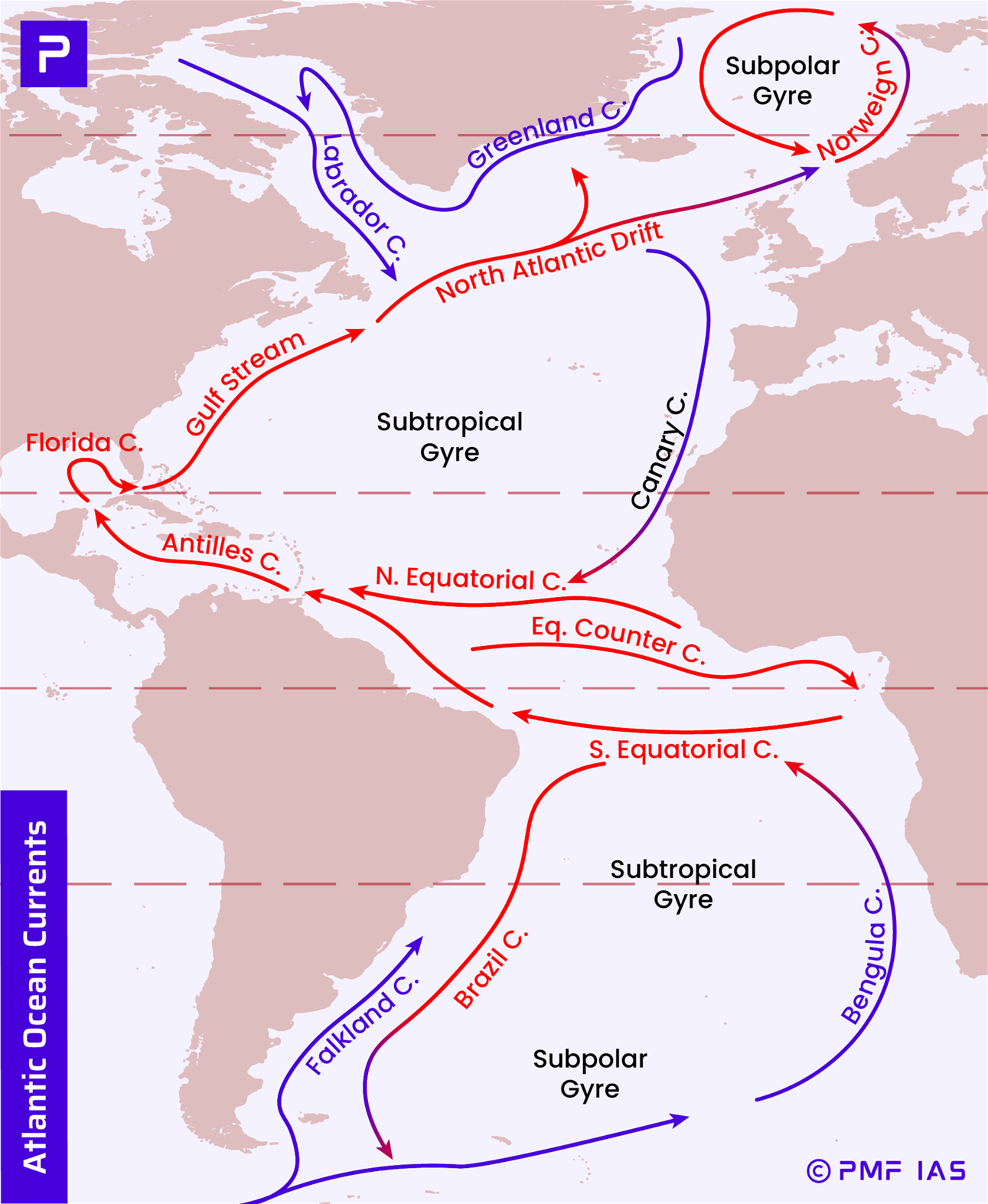

- Arkhangelsk port on the White Sea is non-operational in winter.
- The hostile nations in the region can restrict St. Petersburg’s access to the Baltic Sea.
- Turkey, a member of NATO, controls the Turkish Straits (Bosphorus and Dardanelles).



Northern Sea Route (NSR)
North-West Passage
|
Ukraine: Odesa port






![PMF IAS Environment for UPSC 2022-23 [paperback] PMF IAS [Nov 30, 2021]…](https://pmfias.b-cdn.net/wp-content/uploads/2024/04/pmfiasenvironmentforupsc2022-23paperbackpmfiasnov302021.jpg)
